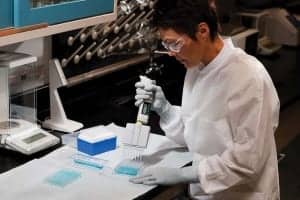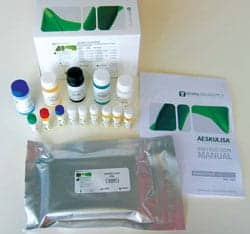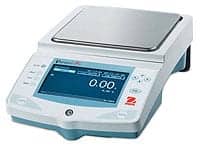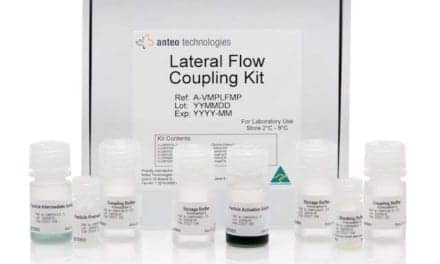
Ergonomic issues are always a priority for laboratorians.
The laboratory workplace for cutting-edge research can be a risky one in which to work. A recent New York Times article by authors Pollack and Wilson in May 2010 states that safety regulations for lab workers sometimes is slack, more so than even in a typical blue-collar factory. According to the Occupational Safety and Health Administration (OSHA), there is a great need for the safety of laboratory workers to be standardized, especially for those working with infectious agents.
Earlier in May 2010, OSHA issued a broad request for information on risks for workers dealing with infectious agents, especially blood-borne pathogens. The regulations focus on hospital and health care workers, but they are expected to also cover laboratory workers in the near future.
While trends in safety are still developing in the health care and diagnostics industries, safety products have progressed to higher levels focusing on the well-being of the laboratory worker. According to OSHA, the regulations have been focused on infectious agents such as HPV and HIV, but not on other pathogens that can be transmitted in the air or via skin contact or aerosols. In addition, newer trends in pharmaceutical industries has been to work on vaccines and drugs from live cells, which introduces newer safety concerns for scientists working in a BioSafety Level 2 or higher laboratory setting.
In addition, OSHA regulations cover multiple chemical and blood-borne pathogen-related exposures, but don’t have clear-cut guidelines to cover for other infectious agents to date. One of the reasons for such spotty guidelines in this area could be the fact that the risk to infection is “invisible,” and with each such pathogen, the infection propagation or accident can be difficult to detect, monitor, and/or control. Based on such in-progress regulations for safety standards within medical and diagnostics settings, many companies are veering to the side of overcaution by providing safety platforms, products, and know-how to their workers in such laboratory spaces.
Safe and Green Environments
While safety products and trends in laboratory safety have always geared toward the well-being of the product and the laboratory worker, the current trends have also focused on making these products greener, with a sustainability focus that was not a priority even half a decade ago. The products focus on a purposeful effort in manufacturing sustainable products that are environmentally friendly. While lab products in the clinical area of research are diagnostics products that yield answers in minutes—be they immunoassay- or molecular assay-based—most of the products focus on sample collection, clinical specimen manipulation and preparation, and analysis.
These sample prep steps naturally trend toward the laboratory worker or health care technician handling human samples for processing. Many companies working on safety products have now realized the need to produce a slew of products not only for the safety of the worker but also for collecting the samples in a sterile environment without contamination.
According to the Web site of well-respected safety product company Kimberly-Clark Professional, the company reminds that not only is providing a safe work environment the law, it is also the right thing to do (for the employees). The Roswell, Ga-based company takes great pride in its efforts to provide lab workers safety gloves that not only protect but also help reduce environmental impact by containing more gloves per box.
According to Heather Torrey, its customer marketing manager, the company recognized the fact that pharmaceutical and biotech companies are now global with global safety needs. Therefore, Kimberly-Clark has consolidated its protective product labels under one label, KIMTECH, using a simple product number system allowing for a streamlined “selection process in any language.”

Safety options are increasingly going green.
KIMTECH products reflect the company’s culture in providing safety products, comfort for the workers, and protection for the environment. The company set the standard for research facilities more than 6 decades ago with its KIMWIPE wipers for delicate tasks, and it is still a market leader in wipers, gloves, and other safety products.
“We believe that safety should always be the number one concern in any business,” Torrey says. “Creating protective yet comfortable solutions designed for the scientific task leads to better worker compliance and reduces incident rates.” For its innovative ideas in reducing glove waste by 45%, the company was given the North American Frost & Sullivan Award for Product Innovation in 2008. Kimberly-Clark Professional also offers KleenGuard G10 Grey Nitrile Gloves, a “green” alternative to latex, a nitrile protection combined with the sensitivity of latex.
Similar to Kimberly-Clark, Quincy, Ill-based DenLine Uniforms Inc has followed OSHA guidelines (CPL-02-02.069) by offering DenLine Protection PLUS, a gowning product line designed to help health care workers with potential for splash of body fluids, chemicals, or blood in a health care setting. These uniforms have been certified splash and spray resistant to all aqueous fluids, including blood, iodine, etc, through 225 hot commercial washes. The uniforms don’t need to be bleached and can be autoclaved.
As per Pollock and Wilson in The New York Times, more than 50% of incidents related to infectious diseases’ pathogen contact are located in diagnostics laboratories. Lab coats and coveralls with resistance to aqueous fluids, as in the case of those produced by DenLine Uniforms Inc, provide an added and higher level of protection for health care workers. The company also provides no-lint, anti-static, and air-permeable lab coats for clean room settings, as well as disposable lab coats and medical scrubs.
Safety in Sample Collection
Considering the fact that most infections and accidents are caused in diagnostic and health care settings during contact with clinical samples, especially at the collection step, several companies have provided solutions for sample collection that allow for noncontamination of specimens without affecting the health care worker or lab technician.
According to Diane Ban, preanalytics product manager at Greiner Bio-One, Monroe, NC, “Sixty-two percent of needle-stick exposure occurs between use and disposal of the device, according to the Center[s] for Disease Control [and Prevention].” Greiner Bio-One is working toward passive sample-collection devices that eliminate the possibility of such exposures. The company has launched innovative safety products including QUICKSHIELD Complete PLUS in 2008, which is a fully assembled, wrapped, and sterilized tube holder and sample needle. The VISO PLUS needle has a translucent view to provide visual confirmation of successful venipuncture.

Disinfectant from PURE Biosciences.
Ban adds, “Greiner Bio-One brings innovative ideas to improve sample quality, safety, and patient comfort.” The VACUETTE coagulation tube labels have an arrow identifying the acceptable fill range of sample volume that would produce the necessary 9:1 blood-to-additive ratio needed to report accurate results.
In the same sample (blood) collection field, Sarstedt Inc, Newton, NC, which has produced medical consumable safety products for more than 50 years, is offering the S-Monovette Safety Venous Blood Collection System as per its recent press release. With plastic tubes with screw caps to minimize breakage and aerosol formation, the collection system features a thin, recessed membrane that is easy to puncture and protects users from residual sample droplets.
In addition, a needle protector covers the front needle immediately after use, while the Safety Needle’s holder protects users from the back end of the needle. The system is sophisticated enough to perform a vacuum or aspiration collection, requiring no sample transfer.
Safety: Disinfectants and Decontaminants
Standard surface disinfectants (traditionally alcohol- and bleach-based) have been available for lab surfaces as well as in medical settings. El Cajon, Calif-based PURE Biosciences, however, provides unique and powerful nontoxic disinfectant product solutions for safety and health challenges in lab and retail settings. The company’s line of products includes the recently launched IV-7 Ultimate Germ Defense, which requires no hazard or warning statements. IV-7 kills bacteria in as little as 30 seconds, compared with 10 minutes for competing products.

Vacuette from Greiner Bio-One.
According to PURE Biosciences, this, along with 24-hour residual protection, allows for a significant improvement in disinfectant products in the market. PURE Biosciences develops antimicrobial products to combat public health challenges such as MRSA, E coli, and H1N1 contaminations on hard surfaces. Using sodium dihydrogen citrate nontoxic technology, PURE Biosciences provides “green” products with competitive advantages in safety and efficacy. In addition, the company’s products have been labeled for use even in children’s areas.
According to PURE Biosciences’ CEO, Michael Krall, “Our SDC technology, which powers IV-7 and other products, is the first new disinfectant active ingredient to be registered with the US Environmental Protection Agency in more than 30 years, and provides protection, even against MRSA.” IV-7 is available in 3-ounce, 32-ounce, and 1-gallon bottles, as well as in larger quantities.
In the same field of disinfectants is Bio-Medical Products Corp, Mendham, NJ, a small company that produces Safety-Soft, a powerful disinfectant. The product, available in a 3.2-ounce size, is a foamed 70% alcohol degerming scrub to significantly reduce cross-contamination among patients by the medical staff, reducing contact infection risk (via hand contact). The formula kills both residual and transient skin flora much more effectively than alcohol dip alone. The emollient-enriched, 70% ethyl alcohol preparation dispensed as a foam evaporates during use while skin-soothing emollients remain, thus leaving the skin soft and moisturized and preventing drying and chapping.
According to the company’s manager, John Geppert, “Being a portable, pocket-size item, it can be taken to all locations where one needs a feeling and ensurance of cleanliness.” In addition, he expects the new government regulations will improve safety measures in health care and clinical labs in general, while products such as Safety-Soft will be representative of disinfectants and degermers in lab as well as public settings.
Sustainability and Help for Developing Countries
Kimberly-Clark Professional, having been in the business of safety products for decades, has released its safety products with a focus on sustainability. According to the company, safety and sustainability are top priorities in research environments. Besides gloves that remove more than 1 ton of solid waste annually from a lab (using at most 25 cases of gloves monthly), the company has consolidated purchases to a key distribution partner, thereby reducing its carbon footprint.
Additionally, Kimberly-Clark pilots programs with global recycling leaders to determine renewable and recycling solutions for disposable lab products. The company’s efforts in reducing waste, recycling, and sustainability are found at the Web site www.kimtech.com/reducetoday.
PURE Biosciences recently released a statement regarding its SDC-based water-purification product. IV-7 Water Purifier was recently shipped to Haiti for use in earthquake-ravaged areas. Donations of the SDC in liquid concentrate form were made through Project Hope, and they were enough to purify 40 million gallons of water for safe drinking.
New and Emerging Products

New glove technology allows comfort without allergy effects.
Greiner Bio-One’s latest innovation in sample collection is the SNAPPY Tube Holder. The only holder on the market with two grips molded to the side, it helps hold the blood-collection tube in place during sample collection. According to Ban, “The future of safety in blood-collection products is heading toward automatic activation of the needle shield, eliminating the need to take the additional step of securing the safety shield over the needle during collection.”
Kimberly-Clark’s focus has been sustainability with worker safety in its new products. “We focus on three key areas in delivering high-performance products at a better value,” Torrey says: “design and comfort to improve worker compliance, and sustainability to lower solid waste.”
Its STERLING glove technology with a new proprietary polymer performs with the comfort of latex without the negative allergy side effects, and it can reduce packaging and solid waste by 40% over latex-based cleanroom or lab gloves.
The glove’s design and polymer selection were a joint product of Kimberly-Clark’s global comfort and sensory labs, which took into consideration the providers who would have to wear its products while performing tasks that could be dangerous to their health.
PURE Biosciences introduced IV-7 recently as its latest product using its SDC nontoxic disinfectant technology. IV-7 is expected to be used as a spray formula with minute(s) kill times for MRSA, VRE, and Staphylococcus, providing lab workers a nontoxic solution for safety and health. With no noxious odor or side effects like bleach, or alcohol, PURE Biosciences expects this product to be truly an environmentally responsible one.
Other products from PURE Biosciences offered to the international market include Cruise Control, an SDC-based antimicrobial to combat outbreaks of flu or infectious respiratory pathogens in the cruise ship industry. According to Krall, “There is enormous public concern about the threat of illness from bacteria and viruses, and IV-7 represents a breakthrough in protection. The cleaning industry will need to strike that delicate balance as demand for green products accelerates.”
Ban adds, “What is still unknown is how the changing health care environment will impact that market in the future.”
Therefore, safety companies are now focused on providing safety to the health care worker and lab professional by providing green, effective, and sustainable solutions without compromising on reliable and durable products that protect them.
Recommended Reading
- Blood-borne pathogens and needlestick prevention. United States Department of Labor, OSHA regulations.
www.osha.gov/SLTC/bloodbornepathogens. Accessed June 16, 2010. - Pollack A, Wilson D. A higher bar for pathogens, but adherence is an issue. The New York Times. May 27, 2010.
- Pollack A, Wilson D. Safety rules can’t keep up with biotech industry. The New York Times. May 27, 2010.
- www.den-line.com
- www.kimtech.com
- www.gbo.com
- www.purebio.com
- www.biomedicalproductscorp.com
Madhushree Ghosh, PhD, is a San Diego-based science and health writer.





